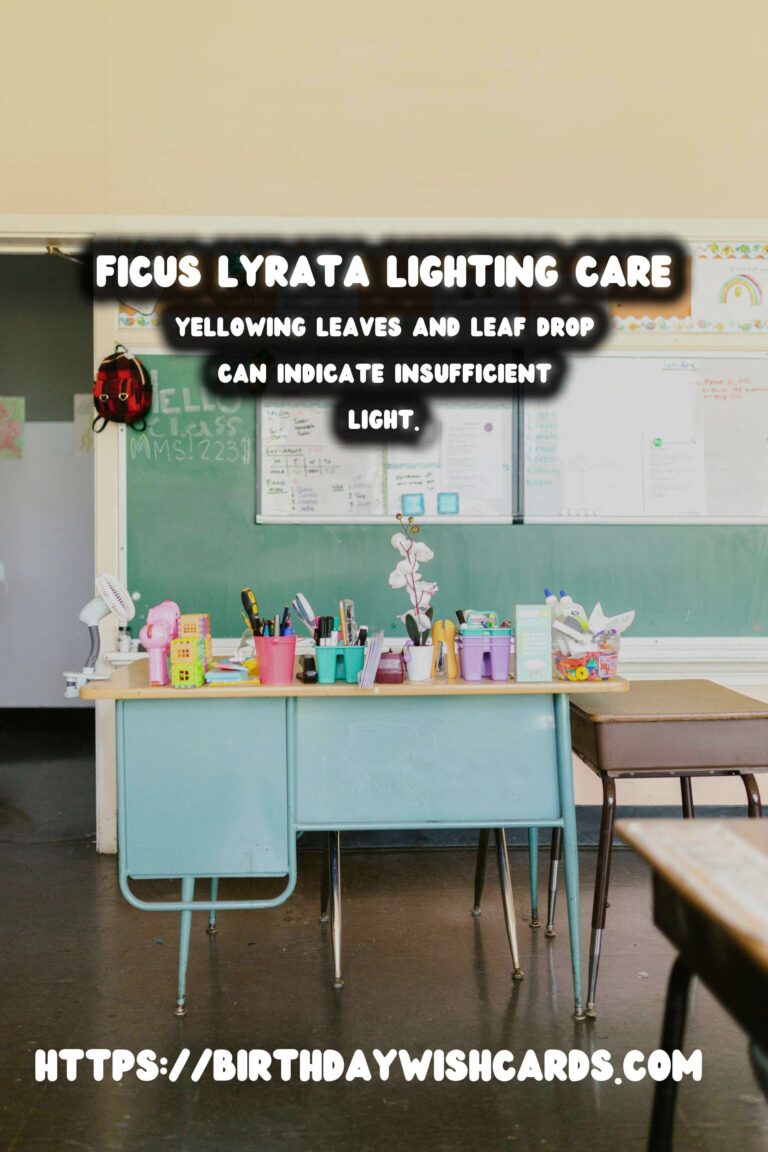
Ficus Lyrata, commonly known as the fiddle leaf fig, is a popular houseplant admired for its large, glossy leaves and dramatic presence. However, to keep this plant thriving, understanding its lighting needs is crucial. In this article, we will delve into the best lighting conditions for your Ficus Lyrata, ensuring it grows healthily and beautifully in your home.
Understanding Ficus Lyrata’s Natural Habitat
To provide the best care for your Ficus Lyrata, it’s essential to understand its natural environment. Native to the tropical rainforests of West Africa, this plant thrives under the canopy of taller trees, where it receives filtered sunlight. This natural setting gives us important clues about the ideal lighting conditions for your indoor plant.
Optimal Lighting Conditions for Growth
Ficus Lyrata requires bright, indirect light to thrive. Direct sunlight can scorch its leaves, while too little light can stunt its growth and cause the leaves to drop. The best location for your fiddle leaf fig is near a window where it can receive plenty of filtered light. North or east-facing windows are often ideal, as they provide ample light without the harshness of direct sun exposure.
If your home lacks sufficient natural light, consider using artificial lights. LED grow lights are an excellent option because they provide the necessary light spectrum without the excess heat that can harm your plant. Position the grow light about 12-18 inches above the plant and keep it on for about 6-8 hours a day to mimic natural conditions.
Signs of Improper Lighting
It’s important to monitor your Ficus Lyrata for signs that it may not be getting the right amount of light. Yellowing leaves, leggy growth, and leaf drop are common indicators of insufficient light. Conversely, brown spots on leaves can indicate too much direct sunlight. Adjusting the plant’s position or modifying the light source can often resolve these issues.
Seasonal Adjustments
As seasons change, the amount of natural light your home receives will also change. During winter months, when sunlight is less intense, you might need to move your Ficus Lyrata closer to a light source or increase the duration of artificial lighting. In contrast, during the summer, you may need to protect it from direct sun by using sheer curtains or moving it further away from windows.
Conclusion
Providing the right amount of light is vital to the health and growth of your Ficus Lyrata. By mimicking its natural environment and adjusting its lighting conditions based on seasonal changes, you can ensure your fiddle leaf fig remains a stunning focal point in your home. Remember to monitor your plant regularly and make necessary adjustments to keep it in optimal health.
Ficus Lyrata requires bright, indirect light to thrive. Direct sunlight can scorch its leaves, while too little light can stunt growth. LED grow lights are an excellent option for homes lacking sufficient natural light. Yellowing leaves and leaf drop can indicate insufficient light. Brown spots on leaves can indicate too much direct sunlight. 









#FicusLyrata #HousePlants #PlantCare #IndoorGardening #FiddleLeafFig




